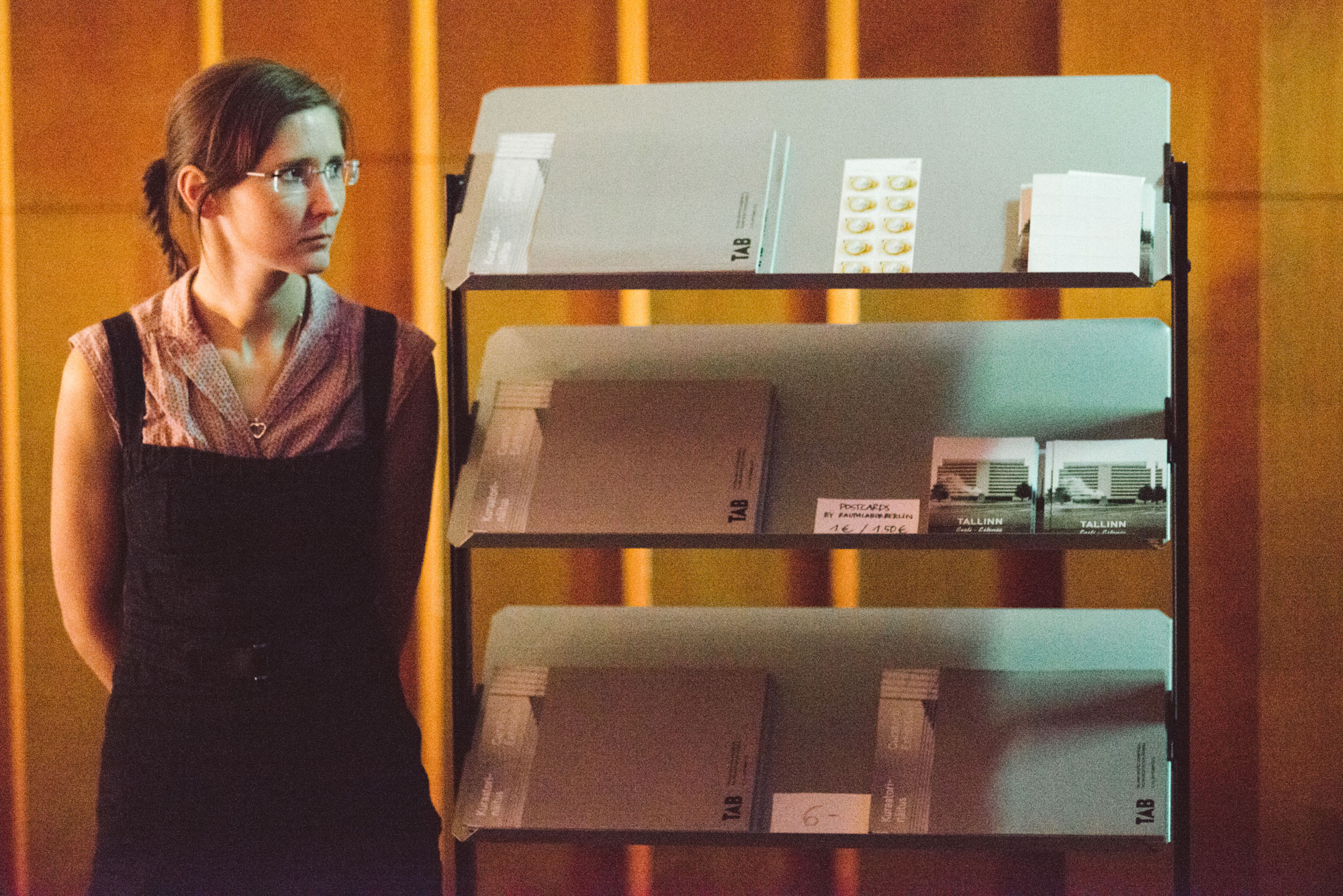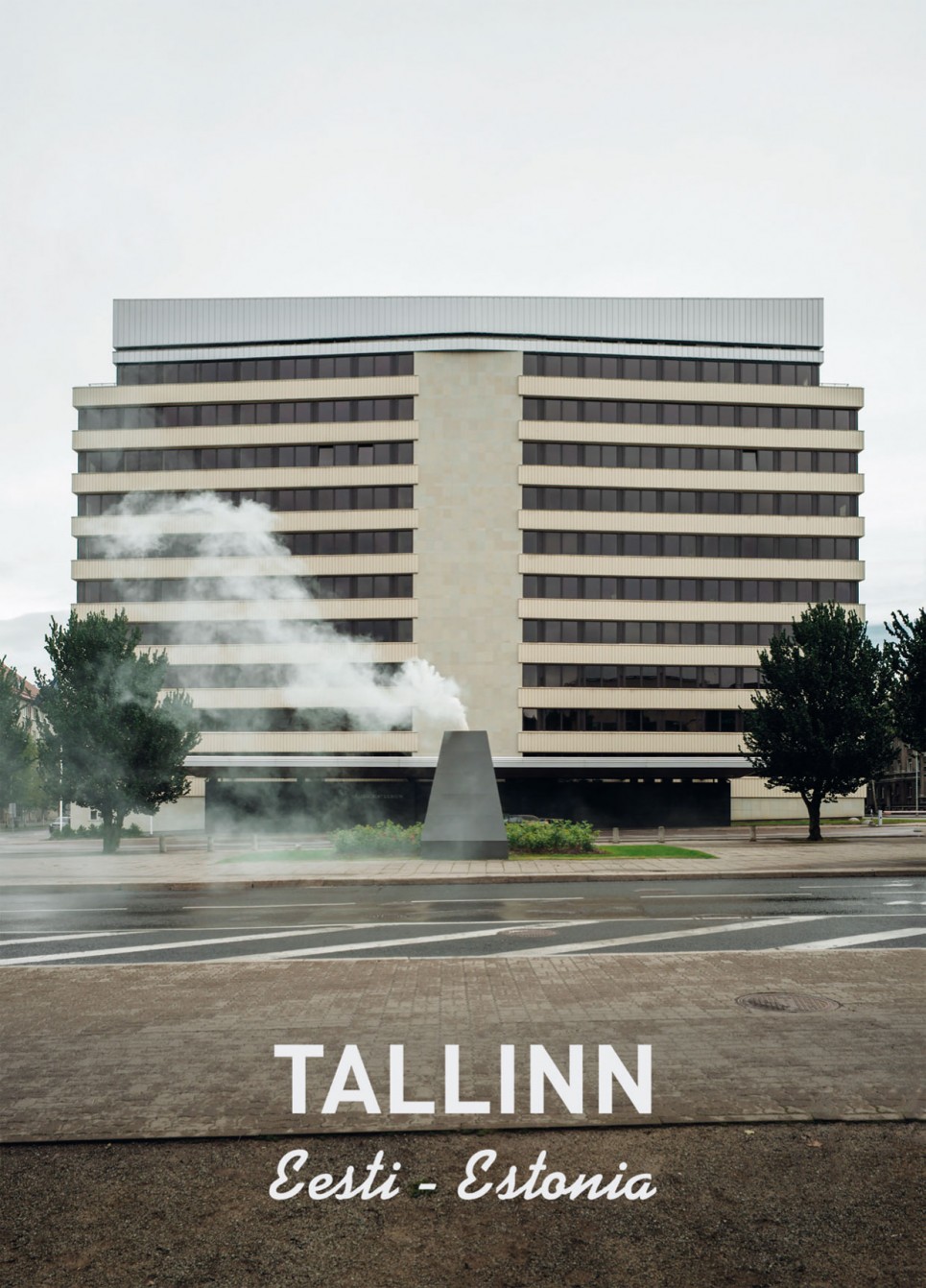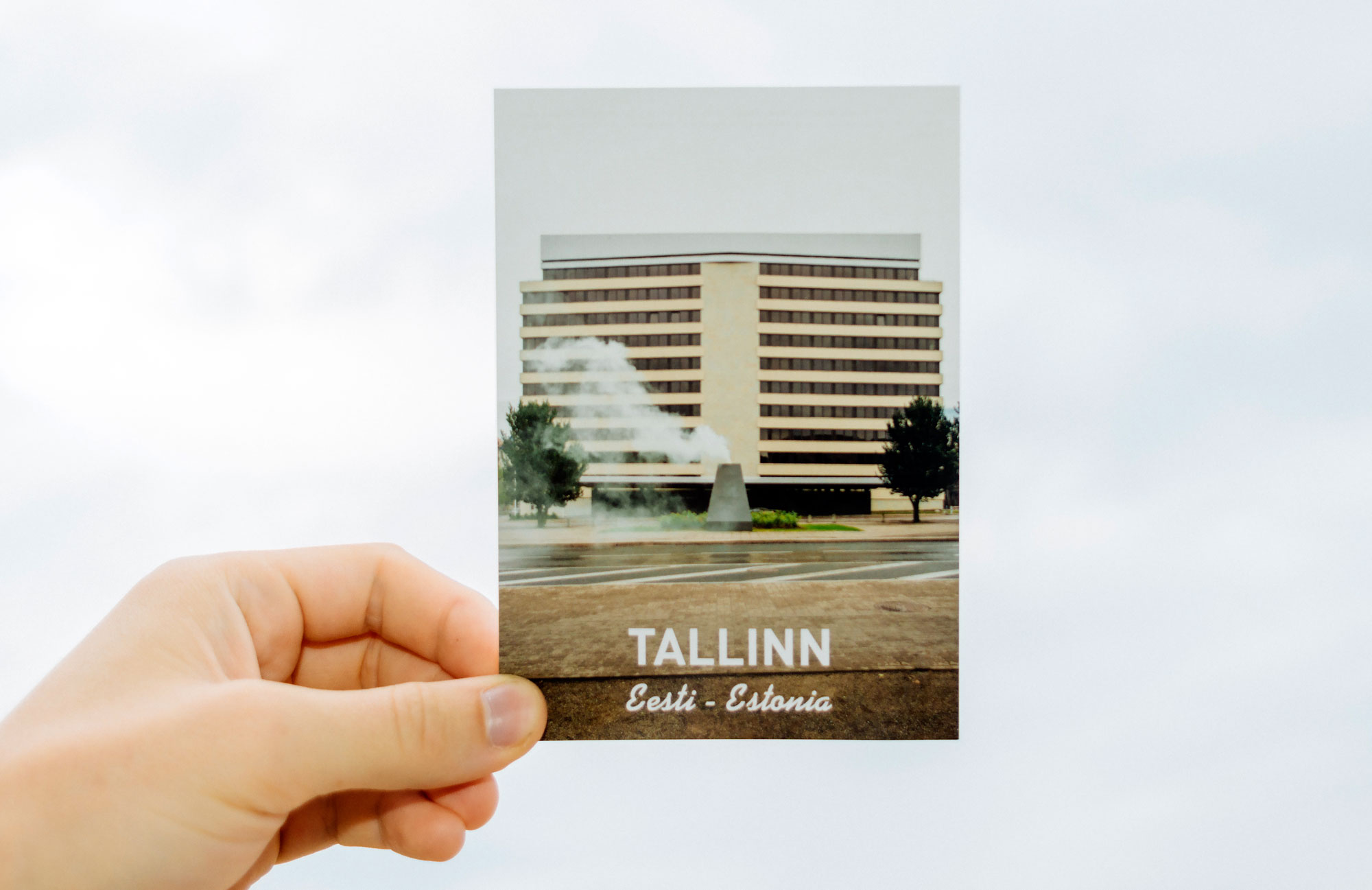Monument to a Public Moment
The project „Monument to a Public Moment“ creates an unexpected setting in front of the Ministry of Foreign Affairs in Tallinn: a cloud of smoke coming out of the base of a monument. An incident is conducted, which only exists for a short moment and disappears again, as if nothing ever happened. The seemingly massive monument base is simply a mockup, built up to exhaust smoke for a few minutes and then taken down again. What stays is a photographed image. The image of the “Ministry of Foreign Affairs” with a smoking monument, printed on a postcard, sold at the Tallinn Biennale and send out to the world.
It is a postcard motive, that contrasts the pretty pictures of historical Tallinn, that are usually shown on today’s postcards sold to tourist in the city. A motive, that refers to postcards from the Soviet time but transfers them to a contemporary setting. It draws attention to a building that makes a turning point in Estonian architecture. Built in 1968 it was the first high-rise modern administrative building erected in the country. It represented the ideas of modernity, and as a popular postcard motive (with cars in front moving so fast they are out of focus on the pictures) it was used to prove the progressiveness of the Estonia. But the buildings career as a modern representative of the country did not last. When the Lenin Monument, which stood at the crossing in front of the building since 1950, was taken down in 1991 after the restoration of Estonia’s independence, it left not only a spatial void but also revealed an ideological gap. The building that had never existed without this monument all of the sudden seemed incomplete.

The “Monument to a Public Moment” is placed this spatial void. It is located exactly where the 8m high monument to Lenin was taken down and where a new memorial is planned to be erected in the near future. For a short moment it restores the historical urban setting in a surprising way. It uses the time gap between the former and future monument, each telling a story of the political history of Estonia. The “Monument to a Public Moment” addresses the here and now.
Yet the smoke coming from the monument base creates several levels of relations. It highlights a paradox in monuments: often being representations of a cultural and historical perspective of the ruling powers, they become object of attack and removal when powers in society shift. In Eastern Europe, this is widely true for monuments erected during the time of the Soviet Union and removed after. The ephemeral “Monument to a Public Moment” addresses the question of the role of the monument today and especially the question of time in relation to memory and monuments – as places of memory. Can we embrace the future of society with the help of monuments? Monuments are about creating a link between the past and the future, arching right through our contemporary presence. But how do they stay relevant to a rapidly changing society? What can be the importance of a physical place in a society rapidly shifting into the digital age? In this sense, the “Monument to a Public Moment” makes a contemporary reference. It creates a link to very current events and developments seen in the media every day: People taking to the streets around the world, to claim their share in the way things go. Peaceful camps and meeting places, creating visibility for a position of deep disagreement with the ruling parties, for a shared hope to change things for the better, to re-write the rules of the games, especially the distribution of financial wealth (in the west) and the possibility to live according to individual values and be able to express those in public – as seen in the Arabic spring.
It can be seen a reference though, that living in a globalised world has done something to us. Something deep has happened but it has not been noticed so much jet. In consumer culture, people are well trained to describe themselves through difference. But the fake decisions of the qualified shopper are mislead. The question instead is: the world has become small. What holds us together? What do we share? How do we want to take digital opportunities and shape the next society? The smoke from the “Monument to a Public Moment” alludes to a tipping point. The moment, when smoke grenades indicate the peaceful expression of many is being met with physical force to diffuse the many, to destroy the visibility of the opposition. The “Monument to a Public Moment” is a comment to the phenomenon – which seems to be truer than ever – that a moment captured on a picture, send around the world may develop the power to change our view on the world.


